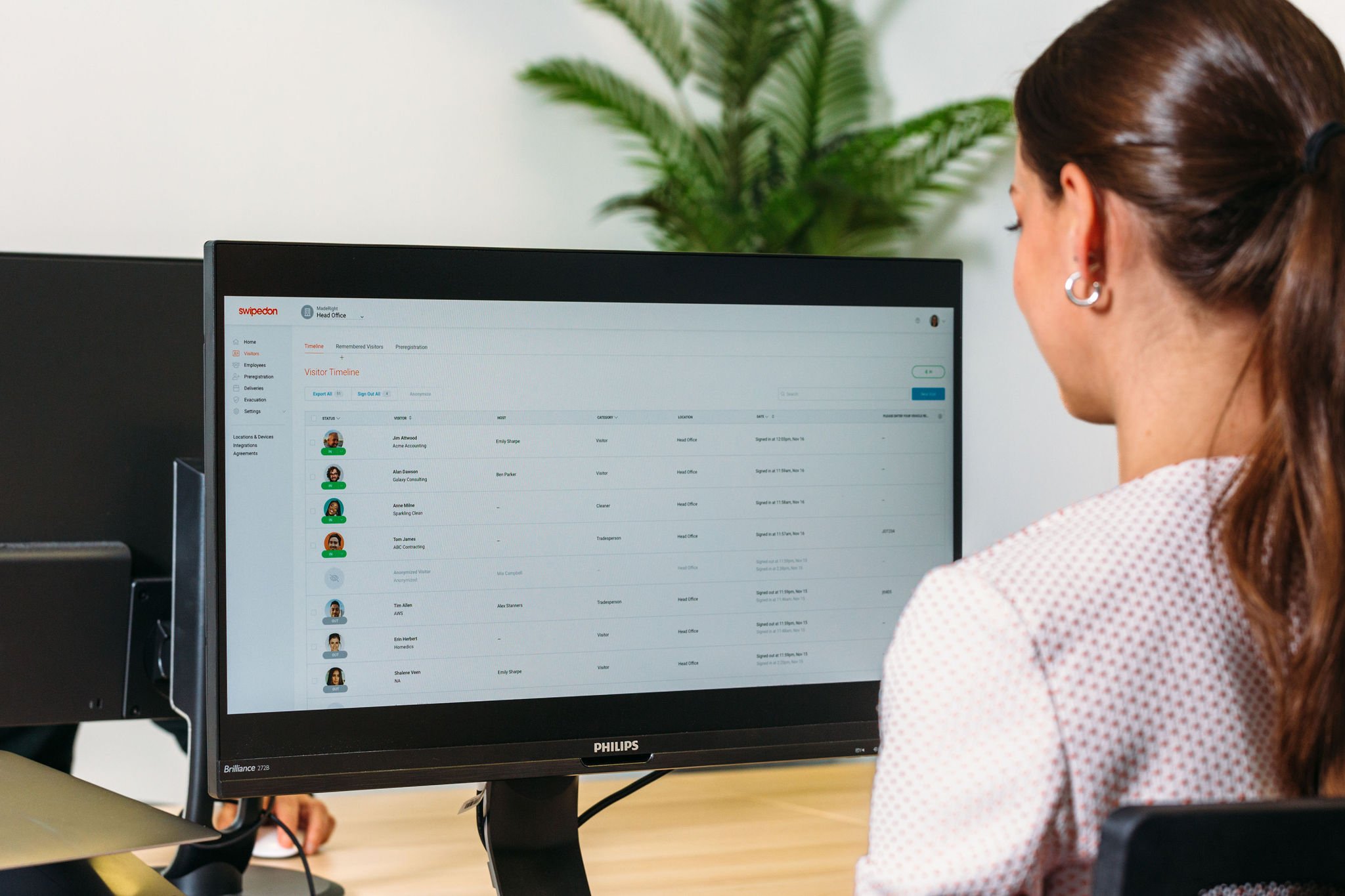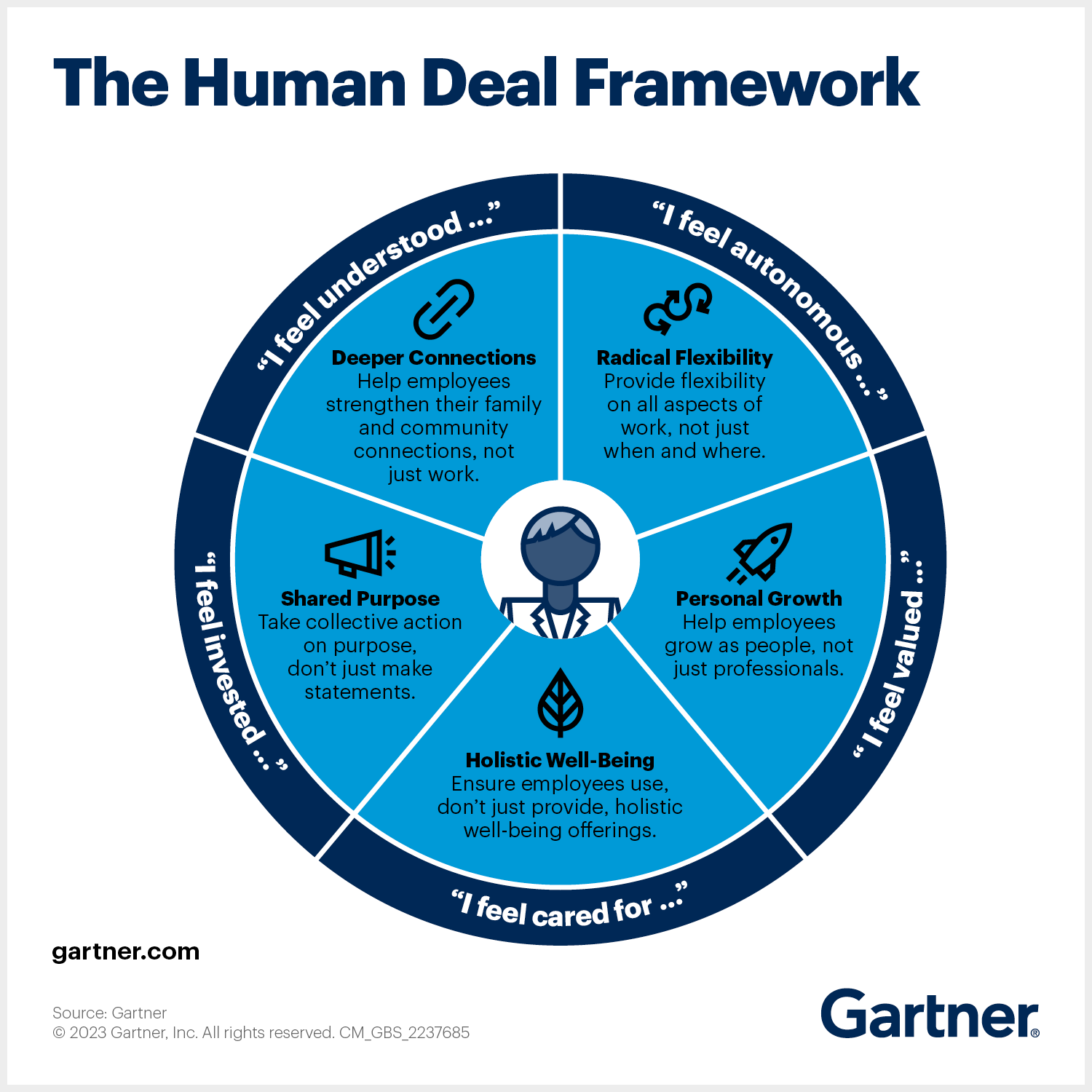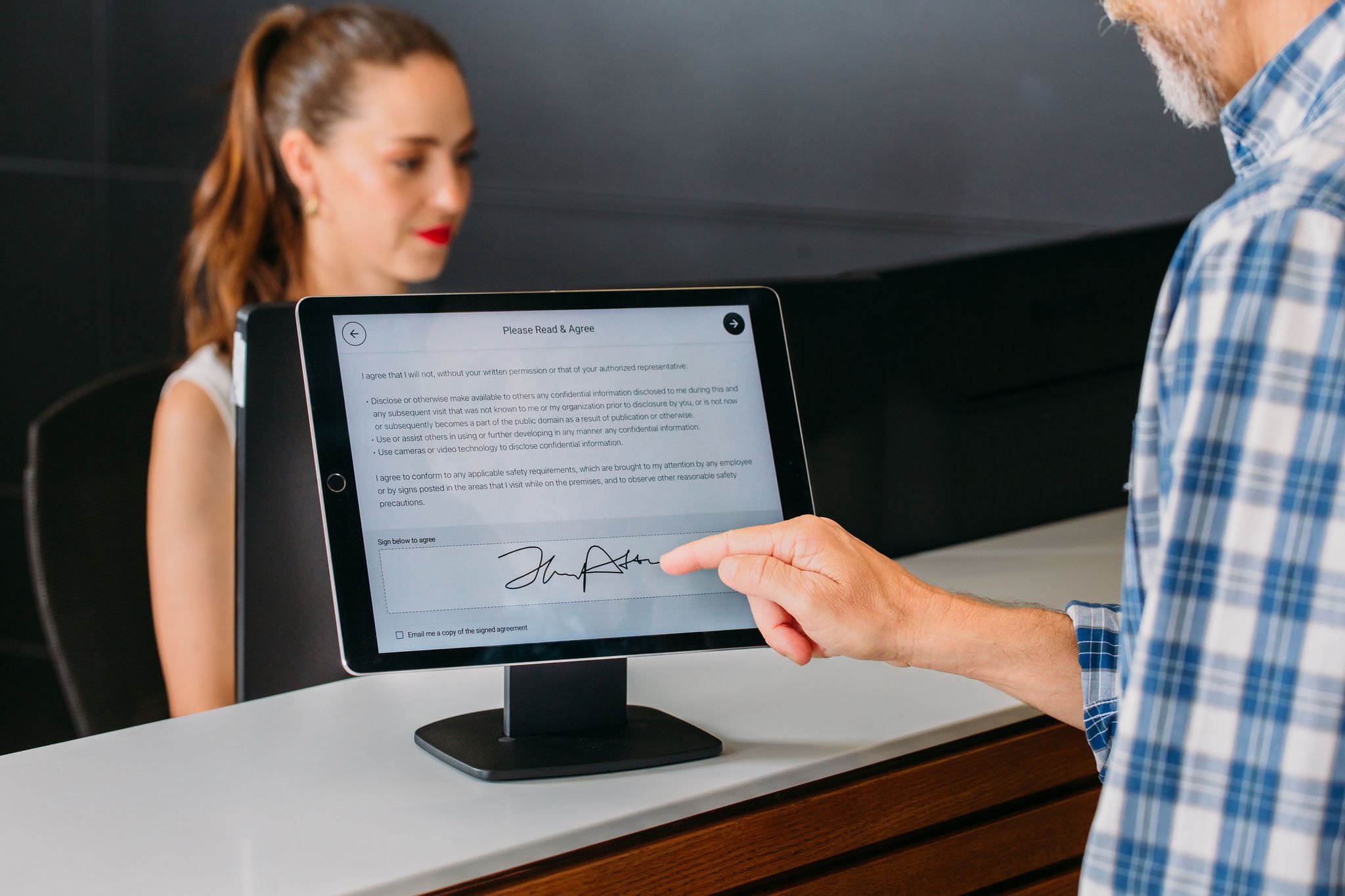Employee Engagement Trends We Can Expect to See in 2024

If your office is anything like ours, the way you work in 2024 probably looks a lot different from how it did even just a few years ago.
Industries worldwide have experienced dramatic changes in the way they work in the wake of the pandemic and these new working realities have altered employee priorities, which in turn calls for new approaches to employee engagement.
Gartner’s future of work identifies how workplaces have moved to hybrid worlds, where staff routinely expect greater flexibility and the ability to work from home.
There has been a massive paradigm shift in regards to employment styles and the majority of businesses have transitioned to being a hybrid workplace.
In this article: employee engagement trends we can expect to see in 2024
- Why is Employee Engagement Important?
- 1. There is a Higher Demand for Efficiency 📈
- 2. Privacy Must be Taken Seriously 🔐
- 3. The Great Resignation Happened, Now What? 🤫
- 4. It's Not Just About Salary 💸
- 5. We're in Our Ultra-Flexible Era 💅
- 6. Candidates Want Company Culture 🧡
- 7. Career Changes are Becoming More Commonplace 🤝
- 8. Emphasis on Security Lock 🔏
- 9. Keeping Up With Technology 🤖
Why is Employee Engagement Important?
Engaged employees are more satisfied, productive, and are less likely to leave the company - that's a fact.
Gallup reports that only 23% of employees worldwide are engaged at work, costing the global economy $8.9 trillion in lost productivity.
With interpersonal and physical interactions limited in the hybrid work era, how will companies manage to keep their employees engaged and ensure their workforce productivity?
Let’s take a closer look at the trends we’re most likely to see in 2024...
1. There is a Higher Demand for Efficiency 📈
With the ever-increasing popularity of flexible workplace arrangements, businesses are recognizing the need to enhance performance management and efficiency.
The rise of AI is powering a new demand for efficiency. Tools such as ChatGPT, that can write full articles and documents in seconds rather than hours, are fuelling greater expectations for companies and staff to produce more.
Businesses are now changing their performance management systems and processes in response to the increasing demand for efficiency. They’re focusing on improving employee engagement communication, transparency, and setting team goals instead of individual ones.
Implementing a workplace sign in solution can help you address these issues towards a productive environment that benefits your employees, customers, and visitors. Boosting the efficiency of operations and establishing favorable conditions to effectively manage the workplace helps to increase employee engagement, satisfaction, and productivity.

2. Privacy Must be Taken Seriously 🔐
Privacy at work will always be a central concern. Now, more than ever, employees want to be in control of the personal information they provide to the company, and employers expect the necessary detailed information about employees.
In fact, data breaches have become so common, and so problematic, that the BBC has a section of its website dedicated to reporting global instances of it.
When discussing privacy, it's important to look at:
- Informational privacy: related to control over the process of acquiring, storing, using, and dispersing employees’ data.
- Work environment privacy: entailing control over visual, space, and acoustic factors of employees’ work environment.
Europe’s GDPR is often seen as today’s gold standard for data privacy and security regulation, but non compliance is still fairly common. In fact, McKinsey reports companies are increasingly seeing an opportunity to differentiate themselves based on their best practice approach to keeping consumer data safe.
The perception of privacy is an essential element of employee engagement and well-being. SwipedOn’s digital sign in solution can help you easily manage employee data while ensuring regulatory compliance, and improving data security.
3. The Great Resignation Happened, Now What? 🤫
In September 2021 alone, an estimated 4.4 million Americans quit their jobs in various sectors. As many businesses reopened physical locations to welcome in-person work and customers, more employees resigned from their jobs in favor of companies that could offer flexible work arrangements.
It was known as the “Great Resignation,” and spurred a change in HR trends, with more businesses having to rely on freelancers to supplement the decreased in-house staff or examine their policies around hybrid working.
The term “quiet quitting” became common to describe disengaged staff, which Gallup said could apply to more than half of all U.S. workers. These were no empty threats either - employees, particularly younger staff, made it clear they were willing to walk away from jobs that didn’t live up to their expectations.
It’s seen Gen Z attract criticism over their work ethic, but regardless of which side of the debate you land, it has set a new standard for employee engagement.
4. It's Not Just About Salary 💸
Although compensation is a major component of employee engagement and retention, more employees are willing to take a pay cut for a better work-life balance.
Employees crave a sense of purpose at work. They want to be seen as a whole person as opposed to just another cog in the business' wheel. They are evaluating how they live their lives - work is a subset of life, no longer separate from it.

Autonomy and flexibility play a huge role for this new employee who embraces the hybrid workplace and the work life balance it has to offer. It's become more important than ever to ensure your workplace operations are in sync with this rapidly evolving mindset to retain top talent and be at the forefront of workplace efficiencies. Now, it's your job to empower, listen and motivate... and often.
Employers can no longer get by with empty promises and inaction. As shown above, employees are prepared to quit if their expectations aren’t met.
Employees also want their employers to invest and be interested in their career development. An empathic work environment also contributes to keeping employees motivated, as well as being recognized for their achievements.
5. We're in Our Ultra-Flexible Era 💅
Flexible working arrangements are common in today’s world, but the trick is being able to maintain flexibility while also being productive and profitable.
Even as things begin to stabilize, more businesses are looking to adopt a hybrid working arrangement to accommodate employee preferences. Hybrid and remote work has established a solid foundation in businesses across the globe. Equipping your team with the right system and processes to sign in, book desks, accommodate visitors or book out other resources like lockers and company vehicles, will enable a smooth transition, increase productivity, and retain employees.
Employers can encourage staff to be efficient and productive by using a variety of tools to power remote work:
- Communication software such as Slack and Microsoft Teams make it easy for staff to communicate and meet from anywhere.
- Asana and Trello are useful project management tools that help teams to organize tasks, track projects and collaborate.
- HubSpot is a popular customer relationship management (CRM) platform with a comprehensive range of tools for all aspects of customer dealings.
6. Candidates Want Company Culture 🧡
Company culture is becoming increasingly important for attracting and retaining talent. McKinsey has reported on the competitive edge companies with a good organizational culture have over those who don’t, andcompany culture has also been cited as a driving element for making an employment decision by almost 50% of active job seekers.
“You can’t ask people for culture to name the collective cause, you have to offer them a cause to join” – Simon Sinek, Diary of a CEO
A clearly defined and articulated culture includes clear values which is why it’s crucial to define your vision and your purpose which forms that collective cause. Recognizing employees’ progress and prioritizing workplace wellbeing will also help engage and motivate employees.
People talk, and businesses with a reputation for having a poor culture will struggle to attract the best talent. Remember, this is the generation of employees who will stick to their guns with what they expect from employers now.
Companies like Google, Netflix and Patagonia have become renowned for their culture - aka their collective cause - and have reaped the rewards.
Technology like a dedicated employee sign in sign out app can promote a positive work environment by focusing on staff health and comfort. It empowers your employees with an easy-to-use tool for touch-free sign in and the convenience of setting custom status messages. Building a culture of workplace equity, wellness, and empathy boosts employee engagement and productivity.

7. Career Changes are Becoming More Commonplace 🤝
For people considering a job change, searching for greater work flexibility, better pay, and financial incentives are identified as the major reasons for wanting to leave their current employment.
Career advancement, less stress, and better work-life balance can also make workers jump into new jobs.
Gen Z and Millennials are switching careers much more often than previous generations.Many employees see job-hopping as an effective career strategy, particularly in the long run.
Keeping your workforce engaged in such dynamic conditions requires developing an employee-first company culture providing career growth, challenging opportunities, flexibility, and a fair work-life balance.
Paying greater attention to individual staff members and their own needs, including for career progression, is a key aspect of keeping them engaged and in the workforce.
8. Emphasis on Security Lock 🔏
With the ever-evolving threat landscape, workplace security is becoming an important consideration for making employment choices. Candidates expect organizations to account for their safety while they are in the office, and this includes their personal information.
To respond to this employee engagement trend and make your company attractive for current and potential workers, consider ways to improve office security.
Implementing a digital check in system can help you address potential security issues and attract and retain talent. A full-fledged platform comes with secure contactless check in and screening tools, which enables you to create a safer environment for employees.
Biometric access control systems and AI-powered security and surveillance are other developing security systems. Just as data security is a leading consideration for customers, it’s also just as important for staff.

9. Keeping Up With Technology 🤖
Technology is rapidly evolving, and AI is a leading example of how new programs and softwares are coming online all the time.
Employees are ever-aware that they need to stay on top of emerging technology so they don’t get left behind. The way people are working is changing, with AI tools empowering productivity and altering the role people have within workplaces.
For businesses, that means keeping up with trends and tools, and being agile and willing to keep pace with developing tech - not only for your business, but to challenge and upskill your people on how it should be implemented in today’s world.
Being aware of these emerging trends in 2024 means you can develop effective approaches to maintaining the engagement and productivity of your team. With the right tools in hand, you are most likely to maximize the benefits workplace flexibility offers while retaining your best talent.








 Germany - Deutsch
Germany - Deutsch